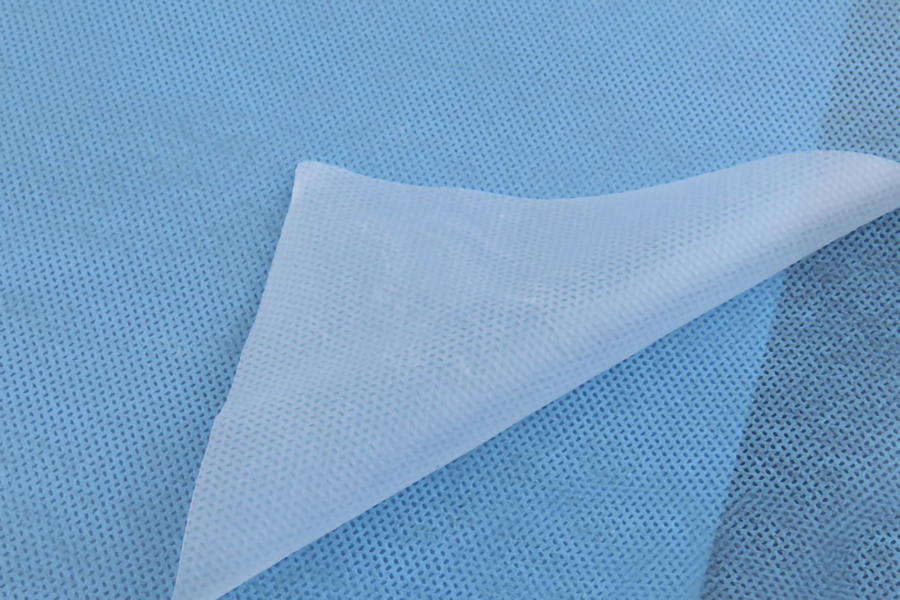Several types of polymers are commonly used in the production of
spunbonded nonwoven fabric, each offering unique properties and performance characteristics. The most common polymers include:
Polypropylene (PP):
PP is one of the most widely used polymers in spunbonded nonwoven fabric production due to its excellent balance of properties.
PP fibers are lightweight, strong, and abrasion-resistant, making them suitable for a wide range of applications.
PP spunbonded nonwoven fabrics are known for their softness, flexibility, and moisture resistance, making them ideal for hygiene products, medical textiles, filtration media, and packaging materials.
Polyethylene (PE):
PE is another commonly used polymer in spunbonded nonwoven fabric manufacturing, particularly in applications requiring high flexibility and moisture resistance.
PE fibers are lightweight, flexible, and resistant to chemicals and moisture, making them suitable for outdoor applications, such as agricultural covers, landscape fabrics, and protective clothing.
PE spunbonded nonwoven fabrics offer good barrier properties against liquids and gases, making them useful for packaging materials and protective barriers.
Polyester (PET):
PET is a durable and versatile polymer used in spunbonded nonwoven fabric production, offering excellent strength, dimensional stability, and heat resistance.
PET fibers are known for their high tensile strength, abrasion resistance, and resistance to UV radiation, making them suitable for demanding applications such as geotextiles, automotive interiors, and industrial filtration.
PET spunbonded nonwoven fabrics are often chosen for their durability, colorfastness, and resistance to environmental degradation.
Polyamide (PA) / Nylon:
Polyamide or nylon polymers are used in spunbonded nonwoven fabric production for applications requiring exceptional strength, toughness, and thermal stability.
Nylon fibers offer high tensile strength, abrasion resistance, and resistance to chemicals and solvents, making them suitable for industrial filtration, automotive components, and protective apparel.
Nylon spunbonded nonwoven fabrics are valued for their durability, dimensional stability, and ability to withstand harsh operating conditions.
Specialty Polymers:
In addition to the above, specialty polymers may be used in spunbonded nonwoven fabric production to achieve specific performance or functionality requirements.
Examples include biodegradable polymers (e.g., polylactic acid or PLA) for eco-friendly applications, flame-retardant polymers for safety-critical applications, and conductive polymers for electronic textiles or antistatic applications.
The selection of polymer significantly affects the properties of the final spunbonded nonwoven fabric, including:
Strength and Durability: Different polymers offer varying levels of tensile strength, tear resistance, and abrasion resistance, influencing the fabric's durability and lifespan.
Flexibility and Softness: Polymer choice impacts the flexibility, hand feel, and drape of the fabric, affecting its comfort and suitability for specific applications.
Moisture Resistance: Some polymers exhibit inherent moisture resistance, making the fabric suitable for applications requiring barrier properties against liquids or moisture.
Chemical Resistance: Certain polymers offer resistance to chemicals, solvents, and environmental degradation, ensuring the fabric's performance in harsh operating conditions.
Heat Resistance: Polymer selection affects the fabric's thermal stability and resistance to heat, influencing its suitability for high-temperature applications or sterilization processes.
Environmental Impact: Considerations such as biodegradability, recyclability, and eco-friendliness may influence polymer selection to align with sustainability goals and environmental regulations.
